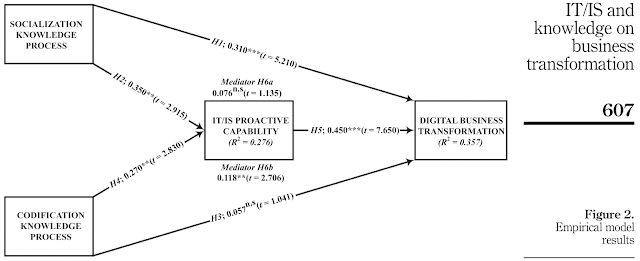A preliminary model analysis of knowledge management design: spiritual leadership on knowledge worker productivity
Authors: Saide Saide
Abstract:
The productivity of worker is crucial not only for company performance but also for sustainable development. In the context of knowledge- economy firms, leadership issues and knowledge resources capabilities are likely to enhance knowledge worker productivity. The purpose of this study is to design a preliminary conceptual analysis of spiritual leadership and knowledge explorative-exploitative on knowledge worker productivity. This study adopts a systematic literature review (SLR) through searching, analysing, and selecting research studies comprising a total of 1355 research papers. The literature was searched in digital scientific libraries and big indexing systems such as Web of Science and Scopus. This research essentially contributes to providing a conceptual/theoretical model of effective knowledge explorative- exploitative in the context of knowledge workers productivity. Several enabler factors such as spiritual leadership (vision, hope/faith, altruistic), knowledge explorative (socialization and internalization), knowledge exploitative (combination and externalization), and knowledge worker productivity (job outcome, problem-solving, work scheduling) were explored and explained. The research provides beneficial knowledge and strategy for managers/leaders on ways to initiate and develop a knowledge-sharing strategy to enhance employee’seffectiveness through pursuing and maximizing leadership contributions. Multifarious constructs and theories are combined. This model further offers a new paradigm for upcoming research.
Keywords: Knowledge management; spiritual leadership; knowledge explorative- exploitative; workers productivity
Full Article: https://www.tandfonline.com/doi/full/10.1080/09537325.2021.1973665
Saide Saide. Department of Information Management, National Taiwan University of Science and Technology, Taiwan. Holds two Master's degrees from Department of Information Management, National Taiwan University of Science and Technology, Taiwan, and Department of Information System, Institute Technology of Sepuluh Nopember (ITS Surabaya), Indonesia. He obtained a bachelor's in Information Systems in Indonesia. He was a visiting scholar at Tampere University, Tampere, Finland in September–October 2019. His research interests include knowledge management (KM), information system/technology (IS/IT), and IS/IT-marketing/business strategy. He has authored numerous articles published in SSCI/SCI/SCIE indexed journals such as Journal of Enterprise Information Management, Journal of Business Research, Big Data, EuroMed Journal of Business, Technology Analysis & Strategic Management, and IEEE Transactions on Engineering Management; including other journals such as International Journal of Innovation Management, Journal of Science and Technology Policy Management, and International Journal of Business and Society.
















.png)

.jpg)






